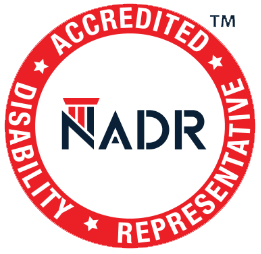What is the difference between a favorable and partially favorable SSDI decision?
After you spend the time to file your Social Security disability claim, it becomes a waiting game to hear back from the SSA regarding the decision. At any level, be it the Initial Application, the Reconsideration or the Hearing with an Administrative Law Judge (ALJ) the decision options are either unfavorable, partially favorable or fully favorable. When the SSA finds you not disabled and able to work it is called an unfavorable decision. When the SSA finds you disabled and not able to work it is called either a partially factorable or fully favorable decision. You might be wondering what is the difference between a fully and partially favorable SSI or SSDI decision? Disability Support Services has a brief description listed below to help make sense of it all.
Favorable SSDI Decision
A favorable decision is when the SSA has decided that you are not able to work due to your impairment. When approved for benefits, you will receive notification by letter. This award letter explains the reasons for the ruling. In the award letter, it will include the established onset date (EOD). The EOD is the day that the SSA found that you were no longer able to work due to your impairment based on the evidence submitted. The EOD also is the date for which you become eligible for disability benefits.
Fully Favorable SSDI Decision
In a fully favorable decision, the SSA sets the established onset date (EOD) to be in full agreement with the alleged onset date (AOD) by the applicant.
Partially Favorable SSDI Decision
In a partially favorable decision, the SSA sets the established onset date (EOD) to be after the alleged onset date (AOD) by the applicant. In addition, a partially favorable decision can also be an approval for a closed period of time. In this type of ruling, the SSA determines that the applicant was disabled for a period of time in the past, but now is no longer disabled. In this situation, your cash benefit payment may be a one-time only payment with no future monthly payments.
What is the biggest difference?
When the established onset date (EOD) is later than the onset date (AOD), your benefits will be reduced in relation to the past due back payments or retroactive benefits that you may receive. In many cases, the difference between the EOD and the AOD can amount to thousands of dollars in lost back payments. A partially favorable decision may be appealed. There are some technical issues that you need to be aware of before you make the decision to appeal. Disability Support Services has proven experience in filing and appealing Social Security claims. If you have questions about the difference between a fully favorable and a partially favorable SSI or SSDI decision please call us. We will help our clients through every step of the process. It is our goal to help you get the award that you deserve.



